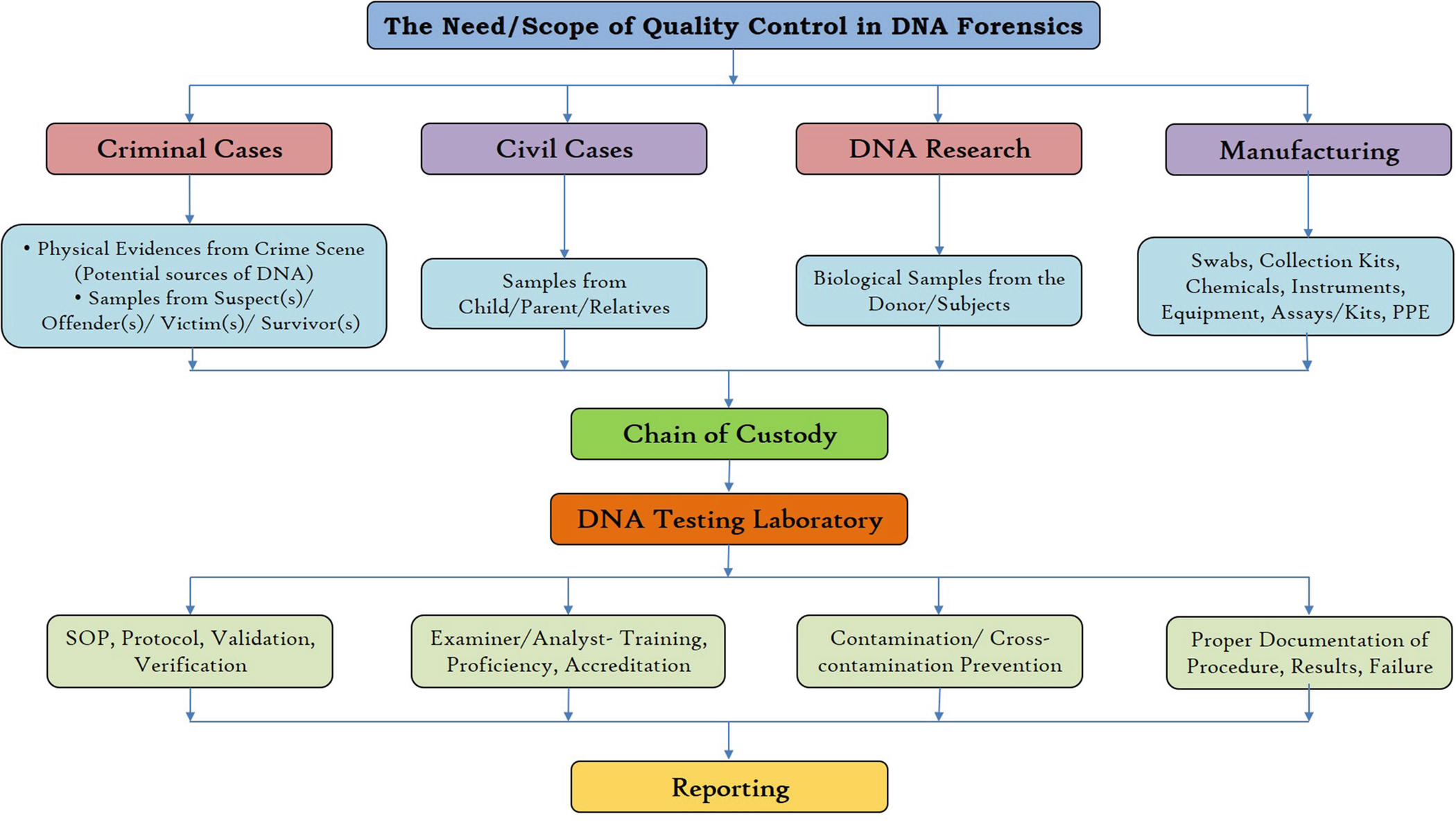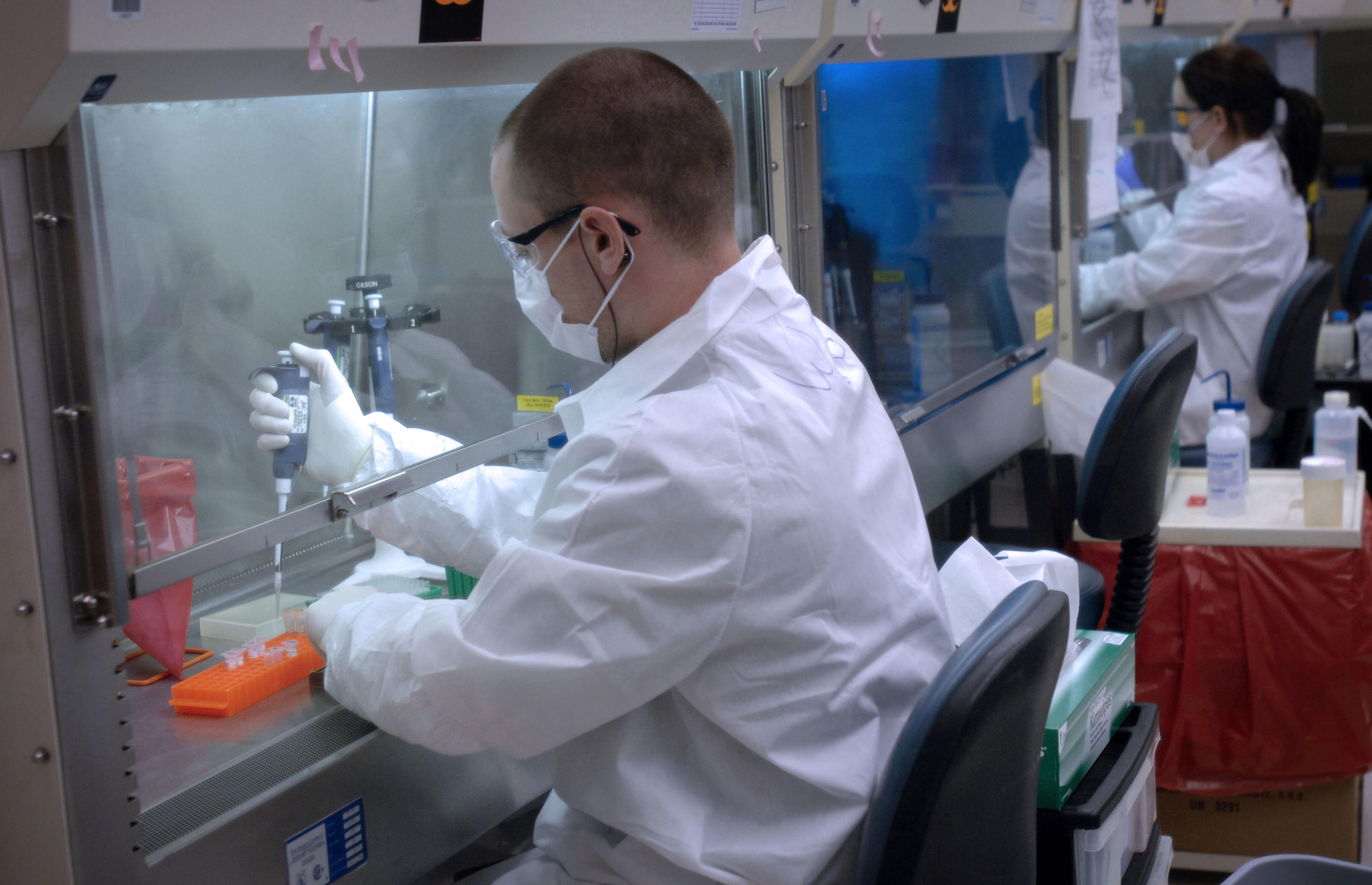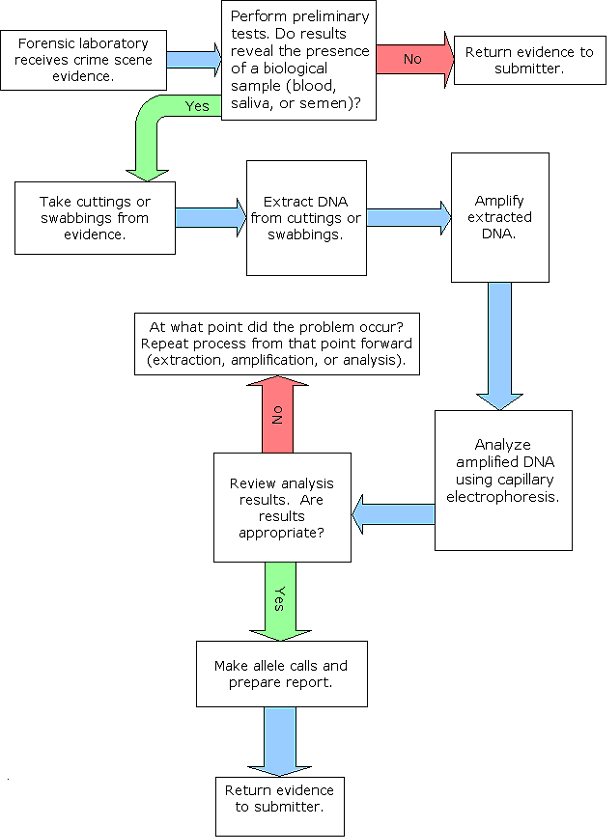Which Is a Method of Preparing Dna for Forensic Analysis
There are various methods of extraction as mentioned below though commonly used are Chelex-100 method silica-based DNA extraction and phenolchloroform method. Challenging forensic DNA samples extracted from for instance bones and hair can be degraded andor contain very little DNA.

Authentication Of Forensic Dna Samples Forensic Science International Genetics
The DNA produced with PCR can be analyzed using DNA fingerprinting techniques.

. In this application PCR-MPS may supplement or replace other instrumental analysis methods such as capillary electrophoresis and Sanger sequencing for STR and mitochondrial DNA typing respectively. DNA typing results indicated that until 1 month after death any of the four hard tissue samples could be used as an alternative to teeth allowing analysis of all of the loci. A small amount of DNA is put into the instrument and it replicates to for a.
Chromatography-based DNA extraction method. 4 transfer bands to nitrocellulose. He has been part of every major development in the field.
3 separate the DNA fragments by gel electrophoresis. Allow probe to hybridize and wash away excess probe. DNA analysis methods have changed numerous times over the years as technology improves and allows for more information to be determined with less starting material.
The main goal of the proposed program was to develop a method to repair DNA and determine its optimal method of use in forensic analysis. Difficult and highly degraded DNA samples are the bane of every forensic DNA analyst. Nuclear transfer O C.
When possible DNA samples are collected stored and transported from the crime scene to the laboratory carefully and with the proper protocols in place. Which is a method of preparing DNA for forensic analysis. To repair damaged DNA prior to amplification and analysis.
Butler PhD in Misleading DNA Evidence 2014 In my opinion over the past three decades no one has done more to advance forensic DNA analysis and interpretation than Peter Gill. Any variation in the mtDNA genome from the Cambridge sequencing is named as polymorphisms. Organic extraction methods are often preferred for the extraction of biological stains containing small amounts of DNA or degraded DNA01-05 These methods could be considered less harsh than other methods such as the use of Chelex beads because no.
Polymerase chain reaction O B. The polymerase chain reaction can be defined as the process which is used to amplify the DNA in the huge amounts. The PCR process has dramatically improved the capability of DNA analysis to obtain valuable evidence in a wide range of forensic applications.
However other techniques such as supported liquid extraction Phospholipid depletion and dilution are also employed on a regular basis in a typical crime laboratory. 5 denature the DNA and add the radioactive probe. Roughly speaking DNA Fingerprinting is a method of DNA analysis used by Forensic Scientists to help solve crimes.
The use of the polymerase chain reaction PCR technique we can generate multiple identical copies from trace amounts of original DNA evidence. This method uses an enzyme blend designed to fix environmentally-damaged samples that have DNA analysis issues. 2 add restriction enzyme to the sample in order to cut the DNA.
The quality and quantity of DNA recovered from forensic samples are often limited and characterization would not be possible without the PCR method. Techniques using organic reagents for DNA extraction are well accepted in the forensic science community. However in terms of the sampling site collection method and sample size adjustment the rib appeared to be the best choice in view of the ease of specimen preparation.
PCR Method Enables Better Analysis of Degraded Challenging DNA Samples. What is the method of preparing DNA for forensic analysis. Control region of mtDNA is called D-loop which is highly polymorphic and hence is used for forensic purpose in criminal investigations.
Modern DNA analysis is based on the statistical calculation of the rarity of the produced profile within a population. According to the study published in WIRES Forensic Science liquid-liquid extractions and solid phase extractions are still the most popular sample preparation techniques. Ethidium bromidecesium chloride EtBr-CsCl gradient centrifugation method.
The method that is required to prepare the DNA for the forensic analysis is to replicate in the amount that is easily detectable in any biomedical instrument for the analysis. 1 isolate chromosomal DNA from a sample of cells. NGS technologies have the promise of providing information in both of these dimensions thereby expanding the utility of mtDNA analysis in forensic science.
This technique was first discovered by Professor Alec Jeffreys of the University of Leicester in 1984 when he found that DNA varies in each human being and makes us unique. Mitochondrial DNA mtDNA analysis is often utilized on these kinds of. This enables forensic scientists to make billions of DNA copies from small amounts of DNA in just a few hours.
21 DNA analysis in forensic science short tandem repeats Only small sections of an individuals DNA are analysed routinely for forensic evidence. To understand the challenges involved in such technology transfer it is instructive to compare. The parts analysed are called short tandem repeats STRs.
Gel electrophoresis O D. DNA amplification by PCR pro-vided an enormous increase in sensitivity allowing minute amounts of degraded DNA to be analysedand now forms the basis of all forensic DNA typingEarly PCR-based systems targeted a small number of SNPs in the HLA-DQA1 GENE 7Although these systems were use-. DNA profiling is the determination of a DNA profile for legal and investigative purposes.
The forensic use of DNA typing is an outgrowth of its medical diagnostic useanalysis of disease-causing genes based on comparison of a patients DNA with that of family members to study inheritance patterns of genes or with reference standards to detect mutations. Cambridge sequencing is the standard sequence to which all the human mtDNA are compared 8. Amplicon targeted sequencing by massively parallel sequencing PCR-MPS is a potential method for use in forensic DNA analyses.
Mutations that affect the number of repeats are relatively common so within a population there are usually. A few of the articles that come to mind include the early exploration of short tandem repeats in 1993 published in PCR Methods.

Case And Control Study For Genme Wide Association Study Gwas Genetic Abnormalities Genetic Variation Observational Study

Cytogenetic Results Of Sister Chromatid Exchange Genetic Abnormalities Gene Expression Somatic Cell

Quality Control In Forensic Dna Typing Springerlink
Forensic Science Dna Testing Procedures

Iso 18385 2016 En Minimizing The Risk Of Human Dna Contamination In Products Used To Collect Store And Analyze Biological Material For Forensic Purposes Requirements

Nist To Assess The Reliability Of Forensic Methods For Analyzing Dna Mixtures Nist

A Breakdown Of Instruments Used In Forensic Analysis Aurora Biomed
Forensic Science Dna Testing Procedures

Understanding The Characteristics Of Sequence Based Single Source Dna Profiles Forensic Science International Genetics

Forensic Casework Methodology For Direct Pcr Amplification Of Blood Swabs Forensic Science International Genetics

Behind The Scenes Forensic Chemistry Lab Chemistry Labs Chemistry Forensics

Dna Fingerprinting Or Dna Profiling Rflp Based Pcr Based Dna Fingerprinting Steps Application Youtube




